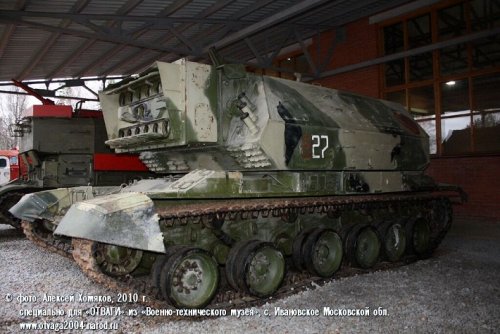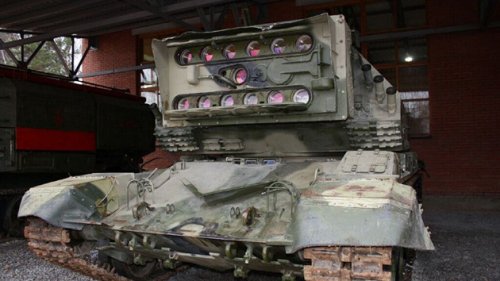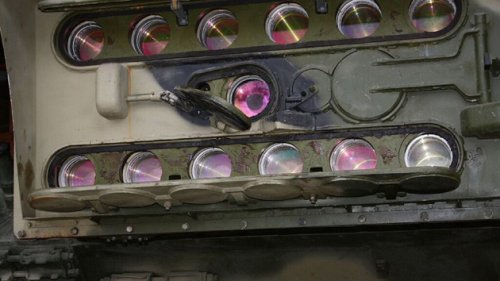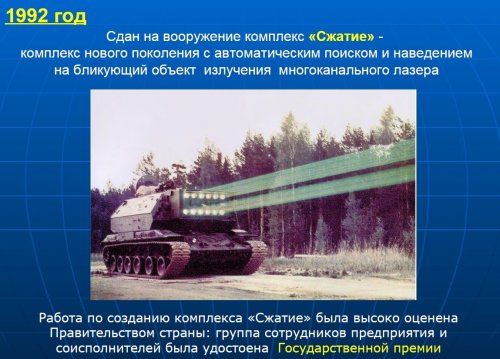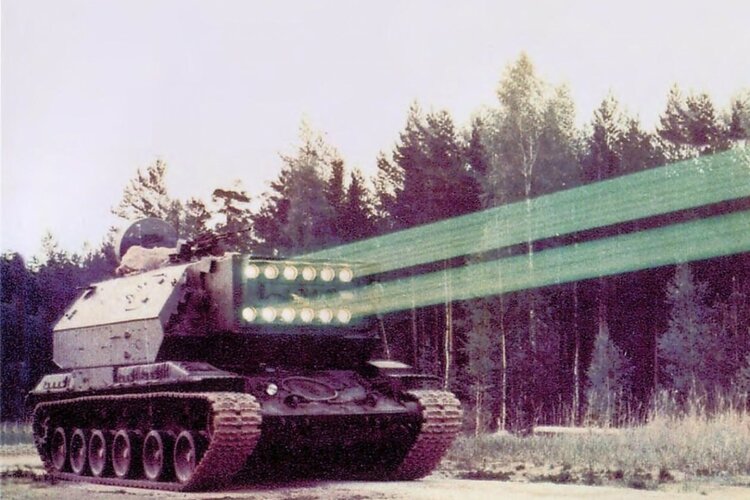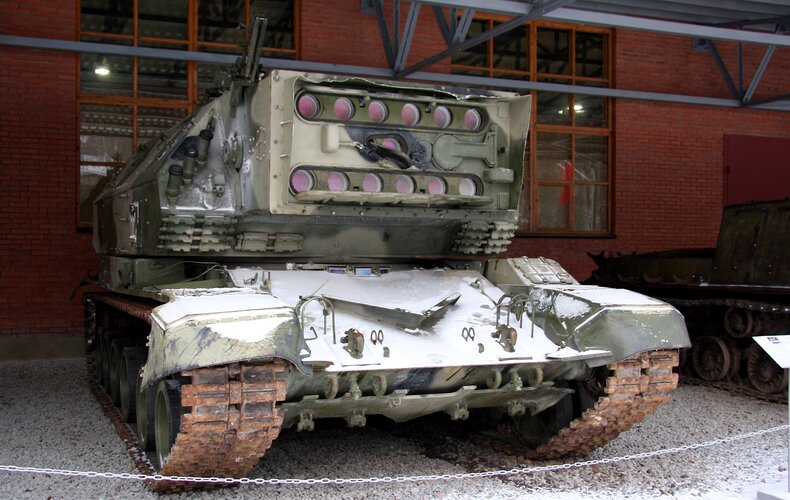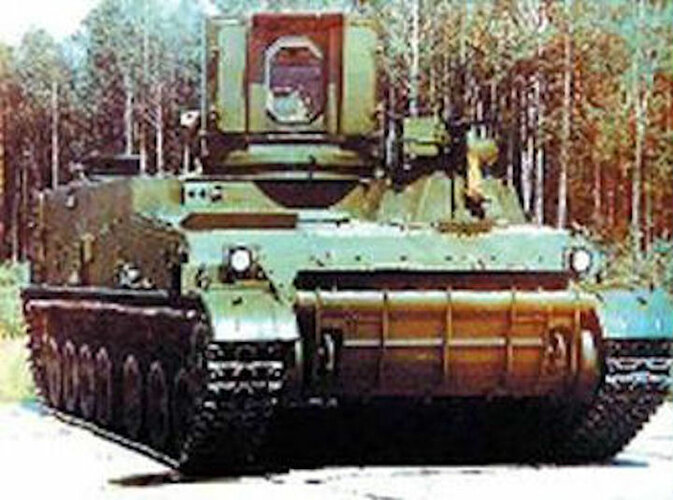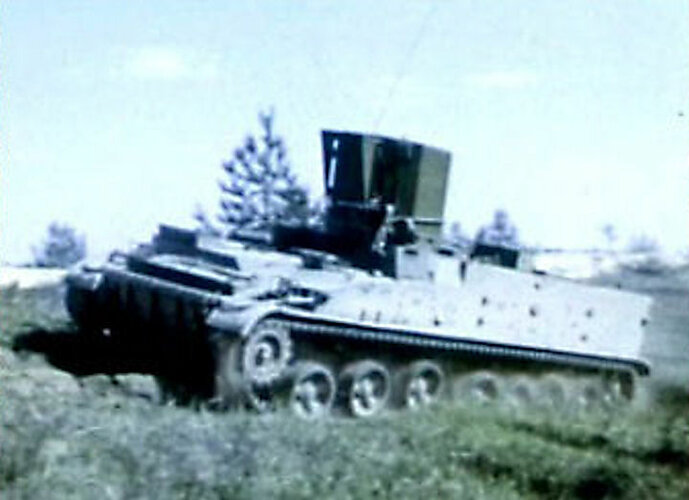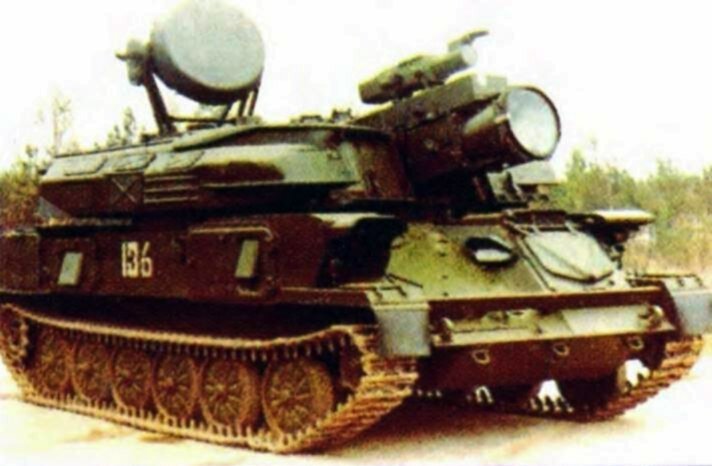Weren't US developments to create a similar system halted by some sort of law regulating the use of blinding weaponry? IIRC the system was to be mounted on the Bradley chassis and the program's name was Roadrunner or something like that. I'm surprised the Soviets were able to avoid political issues with this, I would have figured such a vehicle would be a target in the CFE treaties or something.
Most of the Soviet hardware was in the test stage when they had a rare outbreak of common sense about not wanting to have to care for millions of blind veterans that survived WW3. They and the US both agreed to ban laser blinding weapons before the first one was ever deployed, which is a first in weaponry and arms control treaties.
Colonial-Marine, for Roadrunner, I think you mean Stingray which was a laser-based electro-optics countermeasures (EOCM) prototype system mounted on a Bradley armored vehicle - see bold text below. CORRECTION: I found a reference to "Roadrunner" indicating that it was a project to develop a blinding laser weapon mounted on an armored vehicle prior to Stingray:
https://medcoeckapwstorprd01.blob.core.usgovcloudapi.net/pfw-images/dbimages/Laser Ch 2.pdf , which states, "In the early 1980s, the US Army commenced development of a laser system known as the close-combat laser assault weapon (C-CLAW), nicknamed “Roadrunner.” The C-CLAW used modestly low-powered lasers to attack and neutralize electro-optic sights, night vision equipment, and helicopter canopies. The system employed the primary frequency of pulsed CO2 at 1 kW and both the primary and doubled frequencies of Nd:YAG. As a consequence of the latter, the system was quite capable of inflicting severe damage to enemy eyes, although these were not its intended targets. The goal was to build a 900-lb system to be mounted adjunct on an armored vehicle, but by 1983, the system had grown too heavy (3,000lb) and was too expensive to meet specifications. As a result, the C-CLAW program was canceled."
Scott Kenny, the ban on laser blinding weapons was issued in 1995 and came into force in 1998, long after the fall of the Soviet Union in 1991. Both the U.S. and Russia are among the 109 nations (as of April 2018) that have agreed to the Protocol on Blinding Laser Weapons issued in 1995.
The Vienna Convention on Certain Conventional Weapons (CCW) Protocol IV prohibits the use and transfer of blinding laser weapons. The protocol was adopted in Vienna in 1995.
From Wikipedia: "The Protocol on Blinding Laser Weapons, Protocol IV of the 1980 Convention on Certain Conventional Weapons, was issued by the United Nations on 13 October 1995.[1] It came into force on 30 July 1998.[1] As of the end of April 2018, the protocol had been agreed to by 109 nations.[1]
The Convention on Certain Conventional Weapons and three annexed protocols were adopted on 10 October 1980 and opened for signature on 10 April 1981.[2] In 1986, Sweden and Switzerland pushed for the Blinding Laser Protocol.[3] During 1989–91, the International Committee of the Red Cross (ICRC) held four international meetings of experts on the topic and in 1993 published Blinding Weapons.[3]"
The text of the Protocol is available in the Wikipedia article at
https://en.wikipedia.org/wiki/Protocol_on_Blinding_Laser_Weapons
See also this 1995 Laser Focus Word article
https://www.laserfocusworld.com/las...na-meeting-sets-ban-on-blinding-laser-weapons which states:
"In a stunning reversal of a 22-year-old policy allowing use of laser weaponry on the battlefield, the United States, in response to the intervention of Clinton administration decision-makers at the highest level, joined 43 other nations in approving a ban on blinding laser weapons. The new international protocol was hammered out at a conference held recently in Vienna, Austria, to review the Conventional Weapons Convention, also known as the Inhumane Weapons Convention...
US policy seems more definitive than the terms of the protocol. On October 12 the Department of Defense (DoD) announced that it was canceling the Army's hand-held Laser Countermeasures System (LCMS, see Fig. 1). Little more than a month earlier, after considerable internal debate, the Army had awarded Lockheed-Martin Sanders (Nashua, NH) the initial production contract for what was expected to be a $250 million LCMS program. In announcing the order to terminate the LCMS contract, Kenneth Bacon, spokesman for Secretary of Defense William Perry, said, 'Secretary Perry felt strongly that we should take a lead role . . . by swearing off the development and use of lasers intentionally designed to blind people.'
One of a dozen laser weapon projects and proposals currently active within the defense establishment,
LCMS was the first to reach full-scale production. Prototypes of Stingray, a system similar to LCMS for mounting on a Bradley armored vehicle, and Dazer, a hand-held predecessor to LCMS, were deployed with troops in the Gulf War. Neither system was actually used, even though Army lawyers had determined that causing blindness would not preclude the use of lasers as weapons inducing unnecessary suffering. The laser functions of 'dazzling' or producing 'flash' effects were also deemed consistent with US obligations under the laws of war. Military commanders had expressed concern about the dangers and the lack of policy on their use.
Though the end of the Cold War diminished any threat of Soviet directed-energy and tactical laser weapons, the Gulf War provided impetus for a new generation of so-called nonlethal weapons. A rash of new laser rifles emerged: the visible-spectrum battlefield optical munitions of the Saber 203 and Perseus programs operating at 670 nm; the Los Alamos Laboratory (Los Alamos, NM) argon-ion-laser rifle, operating at 500-600 nm; and low-energy systems developed by the Air Force Phillips Laboratory (Kirtland AFB, Albuquerque, NM), some of which generate near-infrared wavelengths (808-980 nm; see Fig. 2). Shorter-range versions of these systems are being considered for civil law enforcement purposes (see Laser Focus World, Sept. 1994, p. 49).
By 1992, the Army, Marine Corps, and US Special Operations Command all had formulated post-Cold-War requirements for small lightweight systems. 'The threat of directed-energy warfare will not go away,' Brigadier General Jack Nix Jr., Assistant Commandant of the Army Infantry School, stated at the fifteenth Annual Lasers on the Modern Battlefield Conference in 1994, a classified gathering of military laser proponents. 'We must continue to develop leap-ahead technologies, such as lasers . . . to ensure that these systems are properly integrated into our force structure . . .' News in early 1995 that China North Industries Corp. (Beijing, China) was openly marketing a 'laser disturber . . . to injure or dizzy the eyes of an enemy combatant' suggested that blinding lasers were about to proliferate."

